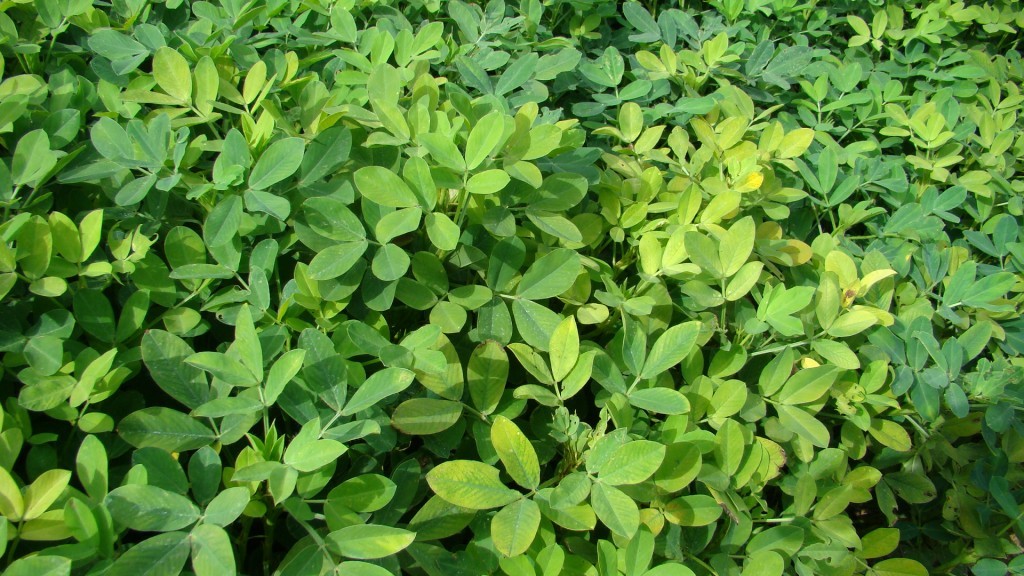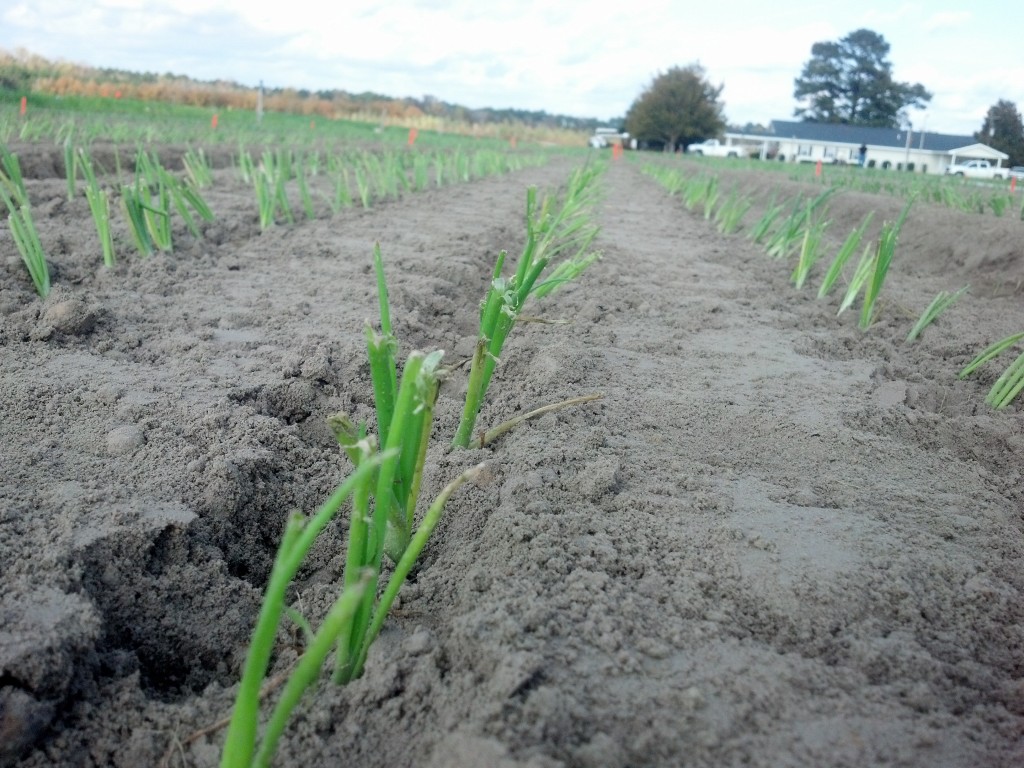
As our peanuts progress through the season, sometimes yellow areas or spots may begin to show up in fields. Peanuts can be yellow for several reasons, including nitrogen deficiency due to poor inoculation or low pH, or in areas where it has been excessively wet. However, often times the yellow areas that we may see as we get later into the season are attributed to manganese deficiency. As you can see in the picture above, manganese deficiency will cause the leaves to look yellow due to interveinal chlorosis. Often times the yellowing will only be apparent in the upper part of the canopy.
Manganese deficiency can begin to show up in areas where the pH is higher than 6.3. When the pH gets above 6.3, the plant may not be able to take up the manganese it needs from the soil. Growers can spray their peanuts with foliar manganese to help with this deficiency. According to the Plant Analysis Handbook for Georgia, growers can treat with a broadcast spray of Manganese by applying manganese sulfate to give them 1/2 lb. of Manganese per acre or use chelated Manganese for a total application of .15 to .25 lb of Manganese per acre. If the symptoms persist, the spray should be repeated at 2 week intervals. In most cases, multiple applications will be required.

